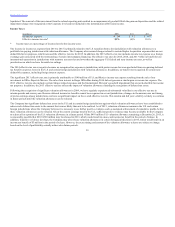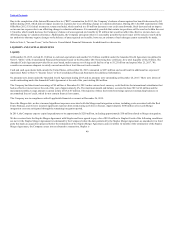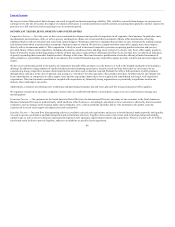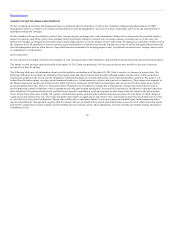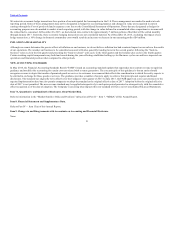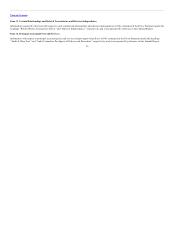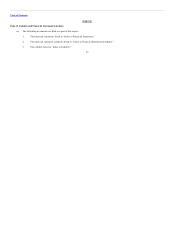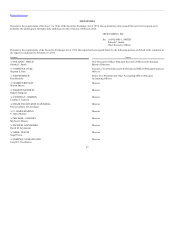OfficeMax 2015 Annual Report Download - page 50
Download and view the complete annual report
Please find page 50 of the 2015 OfficeMax annual report below. You can navigate through the pages in the report by either clicking on the pages listed below, or by using the keyword search tool below to find specific information within the annual report.
Table of Contents
the tax provision of that period. Such changes can result in significant interim reporting volatility. This volatility can result from changes in our projected
earnings levels, the mix of income, the impact of valuation allowances in certain jurisdictions and the interim accounting rules applied to entities expected to
pay taxes on a full year basis, but recognizing losses in an interim period.
Competitive Factors — Over the years, we have seen continued development and growth of competitors in all segments of our business. In particular, mass
merchandisers and warehouse clubs, as well as grocery and drugstore chains, have increased their assortment of home office merchandise, attracting
additional back-to-school customers and year-round casual shoppers. Warehouse clubs have expanded beyond their in-store assortment by adding catalogs
and websites from which a much broader assortment of products may be ordered. We also face competition from other office supply stores that compete
directly with us in numerous markets. This competition is likely to result in increased competitive pressures on pricing, product selection and services
provided. Many of these retail competitors, including discounters, warehouse clubs, and drug stores and grocery chains, carry basic office supply products.
Some of them also feature technology products. Many of them may price certain of these offerings lower than we do, but they have not shown an indication
of greatly expanding their somewhat limited product offerings at this time. This trend towards a proliferation of retailers offering a limited assortment of
office products is a potentially serious trend in our industry that could shift purchasing away from office supply specialty retailers and adversely impact our
results.
We have seen substantial growth in the number of competitors that offer office products over the Internet, as well as the breadth and depth of their product
offerings. In addition to large numbers of smaller Internet providers featuring special price incentives and one-time deals (such as close-outs), we are
experiencing strong competitive pressures from large Internet providers such as Amazon.com and Walmart that offer a full assortment of office products
through direct sales and, in the case of Amazon.com, acting as a “storefront” for other specialty office product providers. Another trend in our industry has
been consolidation, as competitors in office supply stores and the copy/print channel have been acquired and consolidated into larger, well-capitalized
corporations. This trend towards consolidation, coupled with acquisitions by financially strong organizations, is potentially a significant trend in our
industry that could impact our results.
Additionally, consumers are utilizing more technology and purchasing less paper, ink and toner, physical file storage and general office supplies.
We regularly consider these and other competitive factors when we establish both offensive and defensive aspects of our overall business strategy and
operating plans.
Economic Factors — Our customers in the North American Retail Division, the International Division, and many of our customers in the North American
Business Solutions Division are predominantly small and home office businesses. Accordingly, spending by these customers is affected by macroeconomic
conditions, such as changes in the housing market and commodity costs, credit availability and other factors. The downturn in the global economy
experienced in recent years negatively impacted our sales and profits.
Liquidity Factors — Our cash flow from operating activities, available cash and cash equivalents, and access to broad financial markets provide the liquidity
we need to operate our business and fund integration and restructuring activities. Together, these sources have been used to fund operating and working
capital needs, as well as invest in business expansion through new store openings, capital improvements and acquisitions. We have in place a $1.25 billion
asset based credit facility to provide liquidity, subject to availability as specified in the agreement.
48



